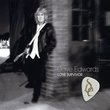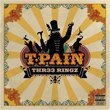Muscular Lees Piano Works from Six Decades
J Scott Morrison | Middlebury VT, USA | 07/09/2008
(5 out of 5 stars)
"Benjamin Lees (b. 1924, and still writing) is one of the doyens of American composers. His music, always approachable but never easy at first hearing, has the benefit of impeccable craft, ingenuity, engaging dramatic gesture, the element of surprise and rhythmic inventiveness. His moods can range from warm to cool, passionate to meditative, diffident to fierce. And always his music grabs you with its integrity and spirit. This disc contains solo piano music -- all of it recorded for the first time -- written over a period of six decades, from the Toccata of 1947 to the Odyssey No. 3 from 2005. Lees' music is, over this long period, of a piece and easy to identify as his own. Never one to copy compositional trends there are, nonetheless, echoes of Prokofiev, Bartok and perhaps late impressionism in his style. Still, one would never mistake one of his works for any of the composers named.
The Toccata (1947) was written just before Lees began his four years of study with George Antheil, whom he honors as his most important teacher. Interestingly, one does not sense a change in basic style between the pre-Antheil Toccata and the works that came later, an indication that Antheil did not dictate to his student how he should write, but rather helped him free up his own voice. The Toccata is virtuosic in the extreme -- actually this is true of most of the works on this disc -- and seems to take as its model the devilishly difficult Prokofiev Toccata. It whirls by in just over two minutes.
'Six Ornamental Etudes' (1957), none lasting much over three minutes, are showpieces that are basically coolly kinetic but with islands of lyrical repose. (They are akin to his previously recorded 'Etudes for Piano and Orchestra' [1974]: Benjamin Lees: Symphony No. 2; Symphony No. 3; Symphony No. 5). 'Three Preludes' (1962), written for pianist Joseph Bloch, are similar in style to the 'Etudes' but are trickier rhythmically and a good deal more dramatic in impact. There is a distinct narrative feel to them but no story-lines are supplied. Make up your own! 'Sonata Breve' (1956) is a one-movement work whose sonata-style is uniquely Lees'; the main themes are not developed as one might expect but pop up in surprising contexts and guises, a kind of sonata-variation form. The work is virtuosic -- all those scurrying triplets! -- and dramatic.
The last three pieces on the the disc are Odysseys Nos. 1 (1970), 2 (1986) and 3 (2005). Each lasts ten minutes, more or less, and each has more heft than most of the previous pieces. No. 2 was written for the brilliant British pianist, John Ogdon, after Lees heard him play the No. 1 in recital. No. 3 was written for this CD's pianist, the marvelous Argentine pianist Mirian Conti. Each of the works teems with incident, engaging gesture, rhythmic variation that keeps one guessing, extended tonal and modal harmonies, and Lees' inherent narrative sense. These are, for me, the most attractive works on the disc and they reveal more and more beauty on repeated hearings.
Mirian Conti, long resident in New York and noted for her devotion to music from both South and North America, is the perfect pianist for these works. She is clearly a musician of great intellectual grasp coupled with the instincts and technique of a first-class pianist. One notes her crystal clear articulation of Lees' otherwise potentially smudgeable contrapuntal lines and her understanding of the music's emotional content. She is playing a well-regulated Hamburg Steinway and is given terrific recorded sound by recording engineer Fabiola Russo. The disc was recorded in Buenos Aires in 2006. The informative booklet notes are by the redoubtable Martin Anderson, founder of the Toccata Label and a well-known writer on contemporary music. There are also helpful notes by the composer about the pieces presented here. Mirian Conti contributes an essay about playing Lees' music.
An unqualified endorsement.
Scott Morrison"


 Track Listings (14) - Disc #1
Track Listings (14) - Disc #1


